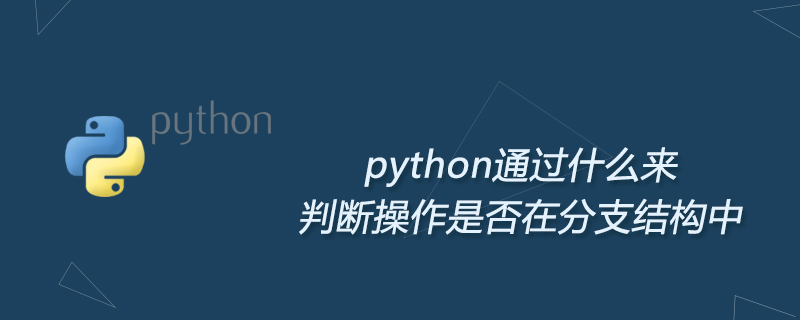Home >Backend Development >Python Tutorial >What does Python use to determine whether an operation is in a branch structure?
What does Python use to determine whether an operation is in a branch structure?
- (*-*)浩Original
- 2020-01-09 13:28:0721665browse

#Python uses indentation to determine whether the operation is in a branch structure. (Recommended learning: python video tutorial )
# Python's indentation (indentation) determines the scope range of the code. This is very different from traditional c/c (traditional c/c uses curly braces {}, and python uses indented spaces).
The number of spaces (whitespace) at the beginning of each line of code is used to calculate the indentation level (Indentation level) of the line of code. Note that one Tab is equal to 8 spaces (Space), and the indentation level is 0 means no indent spaces.
Each statement in Python has an indentation level, and the indentation level is stored using the stack data structure.
Before starting to read the file, 0 (indicating indentation level 0, no indentation) will be pushed onto the stack first. Then read each line of logical code in sequence from the beginning to the end of the file. The indentation level of each line of logical code will be compared with the value on the top of the stack. If they are equal, nothing will happen;
If it is greater than the stack value If the top value is larger, then the indentation level of the line of logical code will be pushed onto the stack, and an indent mark (INDENT LEVEL) will be generated; if it is smaller than the top value of the stack, then all the indentation levels in the stack that are smaller than the line of logic code will be pushed onto the stack. Values with a large code indentation level will be removed from the stack, and an expansion mark (DEDENT LEVEL) will also be generated.
The following is a correct indentation example:
def perm(l):#0
# Compute the list of all permutations of l
if len(l) <= 1:# 1
return [l]# 2
r = []# 3
for i in range(len(l)):# 4
s = l[:i] + l[i+1:]# 5
p = perm(s)# 6
for x in p:# 7
r.append(l[i:i+1] + x)# 8
return r# 9The above is the detailed content of What does Python use to determine whether an operation is in a branch structure?. For more information, please follow other related articles on the PHP Chinese website!

